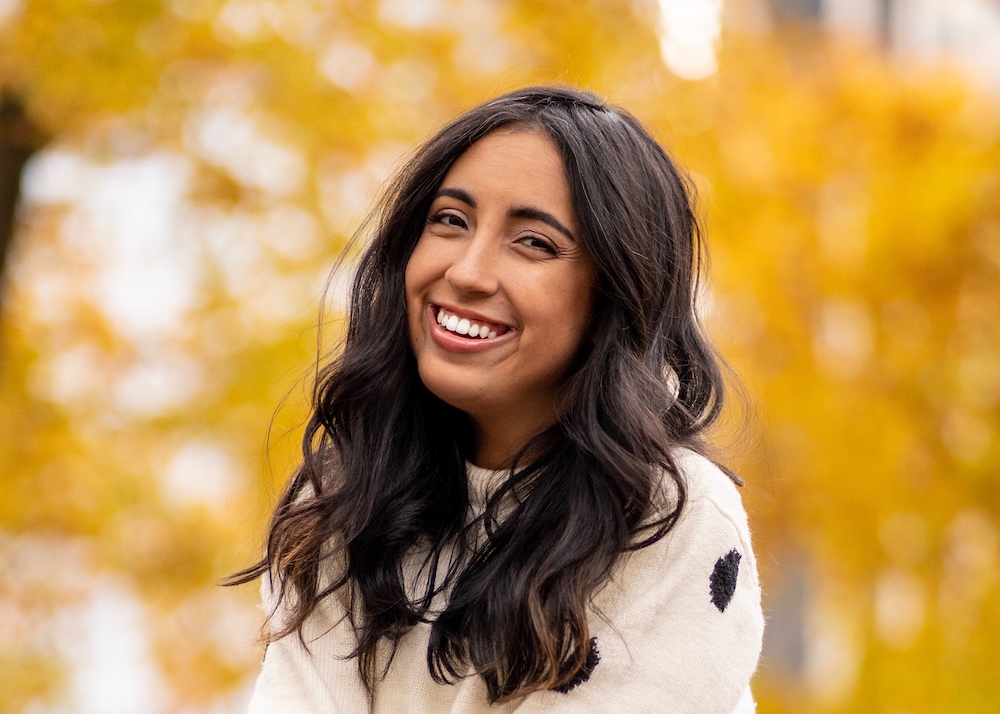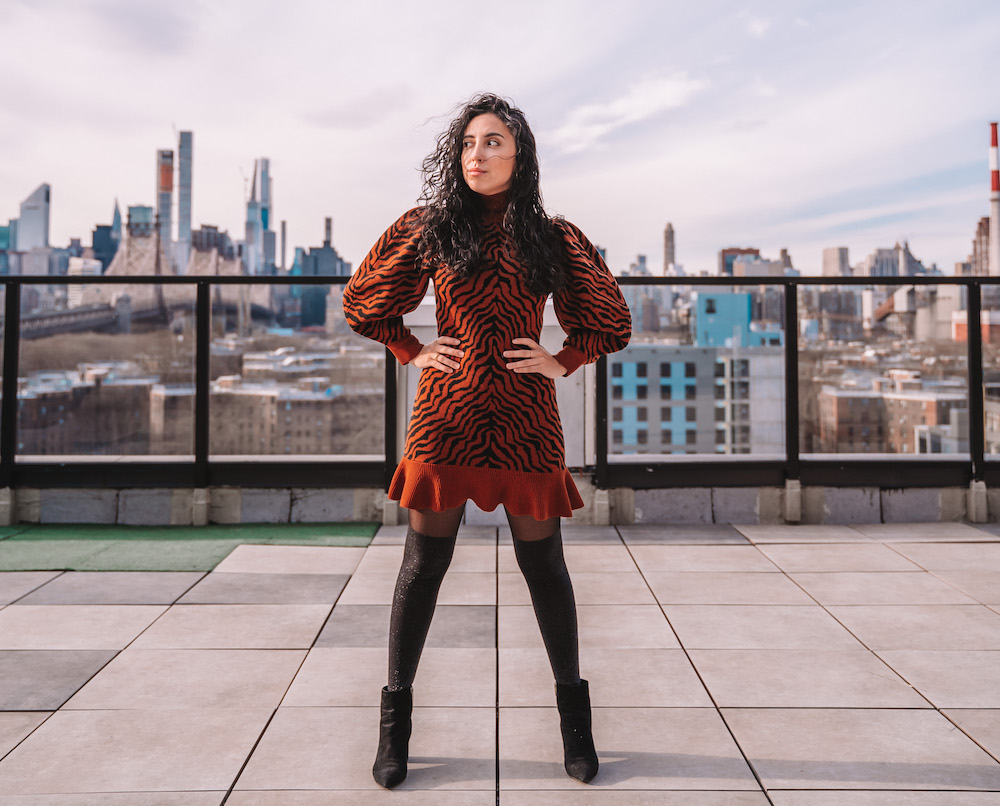
Social Media Coach Lissette Calveiro Talks How to Supercharge Your Brand on Social Media
January 24, 2022
Rana Good is the founder of Naïra NYC. A writer for publications such as Forbes, Travel + Leisure, Coveteur, Mens Journal and others, she created her own platform celebrating women of color.
Working in social media since 2012, Lissette Calveiro is a veteran when it comes to this still relatively new industry. Previously the director of influencer marketing at Ogilvy, she founded Influence With Impact™, “a consultancy that supports influencers and personal brands in turning their social presence into a balanced business with community impact.” As a Latina who has intimate knowledge of both the creator and brand side of social media, she advocates for fair pay and opportunities for creators or color. With its explosive growth, TikTok is a particularly strong area of opportunity for aspiring creators of color.
We asked Calveiro for tips on how to ensure you’re getting paid the right amount for your work and how to make better TikTok videos.
 How did you get started in social media and when did you turn it into a career?
How did you get started in social media and when did you turn it into a career?
Lissette Calveiro: I started my career at a PR agency in 2012 and was coming up with a lot of narratives for our clients to share with the press. The concept of press started to change because it was no longer just publications where people were reading and watching, people were now on social media. That’s when the boom of Facebook and Instagram started. We first started working with bloggers, then our clients became curious about how they should be on social and how they should build their own presence. That’s when I became a hybrid of PR and social media. Eventually, I got more into influencer marketing and decided to open my own business. I always said “I’m not entrepreneurial” but working at Havas and Ogilvy as the director of influencer marketing, both jobs were entrepreneurial in nature. I was the only person leading those initiatives and driving the conversation. I thought why not create my own consultancy where I have my own terms and creative freedom. I wanted to do things my way and hire clients that aligned with my values.
How do you help creators build a personal brand online?
A lot of creators have already built a business of sorts online, that’s why I act more like a coach rather than a strategist for them. I help them find out what their personal brand is and what they bring to the social media table — I help them find their inherent purpose. If they’re creating content for a certain category, I want them to go way beyond the category. I help them find out “what’s the mission?” or “why does this matter?” Then the second piece is defining who do you want to reach? What tactics am going to use to reach those people with the message I bring to the table? This is not an overnight thing, to build and sell to an audience. You need to find consistency, which comes with a lot of roadblocks – whether it’s mindset or thinking “I’m not good enough.” Then we start talking about monetization and building a business from that.
What’s been your experience with TikTok?
I joined TikTok in 2019 experimentally, I didn’t really care about growing an audience or know what I was doing. I have a rule of three when it comes to social media; one platform is home base where everything lives, two is a lead generator, and three is just for fun. I wanted to learn how to make TikTok videos and I’m actually very shy – this helped me learn how to be on camera. I always posted photos and videos felt much more vulnerable and I really used it for that purpose. TikTok is very low risk for creating content and people have fun with it. My TikTok grew the more frequently I posted and I was using it drive to my Instagram. The services I offer as a business are tied more to a different demographic than on TikTok; it’s still younger by age and journey. Instagram is still my home and main platform.
What type of content do you think performs well in TikTok? What TikTok videos don’t do well?
Raw, authentic-feeling TikTok videos perform well. The production quality doesn’t matter, you can be in your car and shoot a great video. People can see through perfection and they don’t want that. The more you just hit record the better it is for you. I recorded a video where I’m getting into my car and there’s just a nugget of wisdom from, and it did really well. Be your authentic self! The second thing is to be short and sweet, you can do up to 3 minute TikTok videos but one metric that’s really important is watch time. Attention spans are dwindling and people watching your videos fully is really good, so keep it short
What tips do you have for creating TikTok videos that will go viral?
Again, short and sweet really helps, if people watch something over and over, they will think your video is amazing. Make sure your content is shareable, things don’t go viral unless people like to share them. Ask yourself, is it relatable? Is it shocking or funny? Do people see themselves in your content? Then the third recommendation is joining a trend when it’s rising because you can use them to your advantage if you put your own spin on it.
Also going viral means people saw your video but that doesn’t mean you get a lot of followers. I don’t post about relationships so when people saw a post about my relationship that went viral, it lured them into my profile and if they found relevance there then they might have followed. But it’s not as effective as going viral in your niche. Viewership doesn’t equal conversion. However, if you create a series and go viral with it, people want to see episode 3,4 and more, and have to follow you.
You can see the demographics of your engaged followers – by geography, age, gender, etc. When you go viral, the viewership can be really random. The video I had that went viral only had 16 percent U.S. viewers so it doesn’t relate to my U.S.-based product. It doesn’t always work in your favor but going viral doesn’t hurt.
What are some of your favorite apps or effects within Tiktok to use when making TikTok videos?
I recommend filming off the app because you have more control, it gives you the flexibility to own your content. In TikTok I love the green screen effect, especially to tell a story. There are also motions, one I like is earthquake which can add a dramatic effect to your video. The only time I film in-app is when I’m lip-syncing or doing a skit because it’s super easy to record. Off platform, I use Splice and InShot, which are really intuitive to use apps for editing. For graphics, I use an app called Mojo, and I use it for Instagram stories too.
@lissettecalv Reply to @lissettecalv let’s break down one part of pricing — my calculator takes you through ALL of it #influencer101 ♬ Quirky – Oleg Kirilkov
What’s your #1 tip to work with brands?
Working with creators and consulting brands on how to work with creators, one thing I often hear is that influencers lack professionalism. Their emails are confusing, they’re not on time, and they’re not having a cohesive conversation. We’ll be talking about content with an influencer and they’ll respond with a Google Drive link without any context. I’ll be like “hey what is this? Can you explain what you just sent?” There can be a lack of communication skills, not being on time, or being difficult to work with. People who haven’t been in a traditional corporate setting sometimes don’t know how to complete work-related tasks. Sometimes we’ll be like can you send us an invoice and some creators will be like “what’s an invoice?”
Also, in order to get paid people to need to send a W9 and I’ve had a handful of people fight me, saying “I would never send you my government information” but I can’t pay them unless I have their tax information. It’s just a piece of paper. But this is the type of thing you learn when you’re in a corporate environment. You don’t have to be super high tech in your work, you can shoot your work on an iPhone but if you are super professional, we will hire you a million times because that’s something that’s missing.
You talk a lot about pricing as an influencer and also the pay gap as a Latina – what are some ways to ensure you’re getting paid a fair rate as a woman of color?
You really have to understand what goes into pricing and a lot of women of color don’t know what to ask for. They then depend on what the brand says is their budget and, of course, every brand is going to try and spend as little as possible. There’s an expectation that the creator will counter and then we go from there. A lot of white creators, both male and female, are asking for so much more than creators of color. On the brand side when I see we’re paying one creator significantly more, I have a responsibility to tell them “Other people are charging X, so you should get X.” That’s what I personally do when women of color undercharge I go back to them and say, “Hey, I got more budget.” The second thing is, realizing that you’re even more valuable as a person of color. Brands need diverse perspectives; you know the campaign wouldn’t be whole without your identity there. I need people to know and feel how much they are worth.
Can you walk me through some ways to make money as an influencer that some people might now know – for example, exclusivity or whitelisting?
There are other elements to campaigns that are not just deliverables, things like usage and whitelisting where they promote content from our own handle. The shelf life of your content becomes way longer than anticipated. If you post something and they promote it for 90 days, it ends up being a 90-day campaign. Your face, name, and likeness is being used and amplified, and you should charge for that, almost like a tax. Exclusivity is when you can’t work with other brands because one brand is holding you to only working with them for a period of time. If I’m working with a brand and another is asking me to work with them and I have to decline, I’m losing out on business. You need to think about this business loss, and you need to charge for it. This happens for shoppable creators in beauty, fashion, and tech. You also need to account for production cost, for example in food content – shopping and testing recipes cost money. If you’re doing makeup and posting lipstick, you have to put on a whole face. Or if you’re hiring a photographer or videographer, that needs to be calculated in your rate. If you’re editing for a week, then you need to add a bonus for yourself.